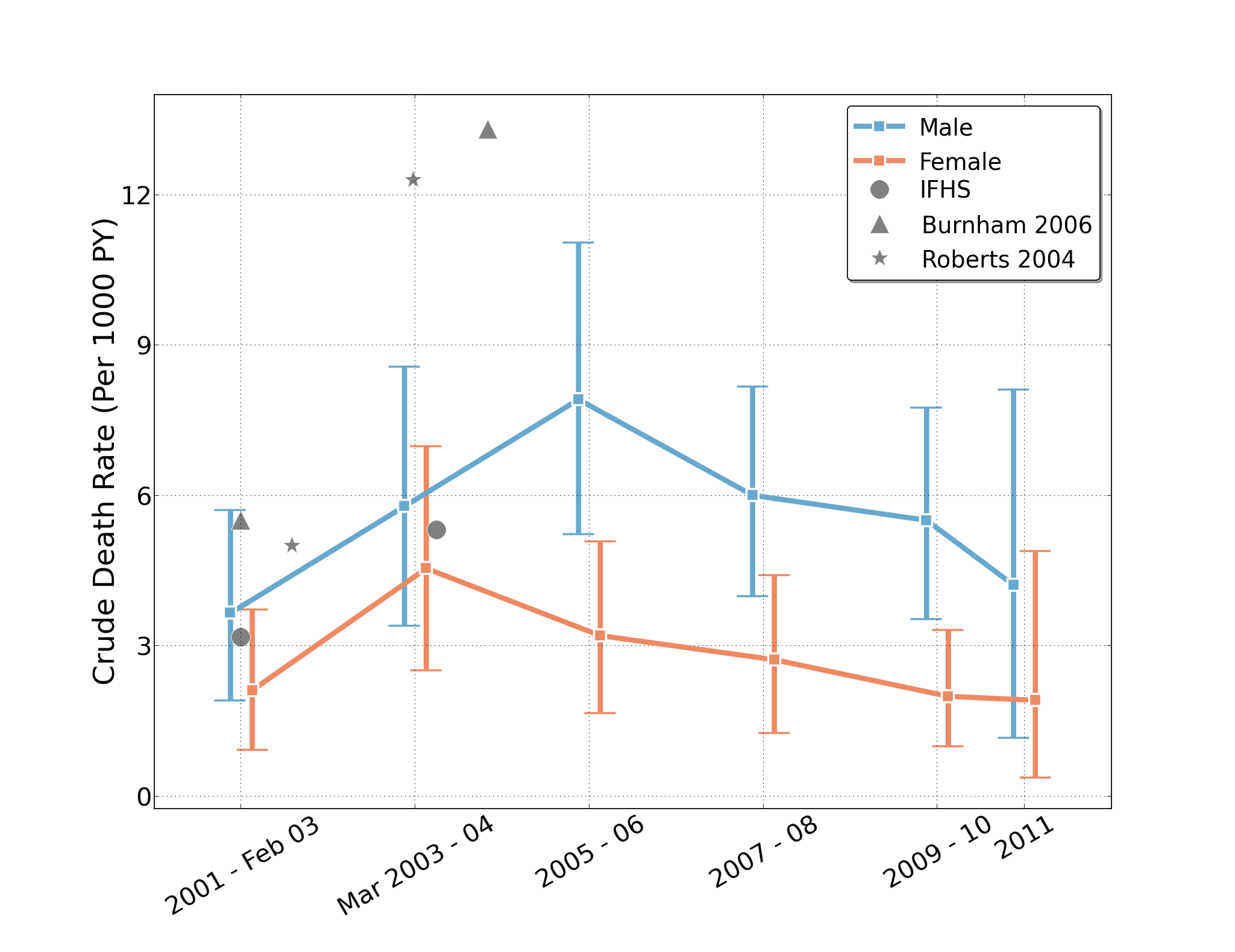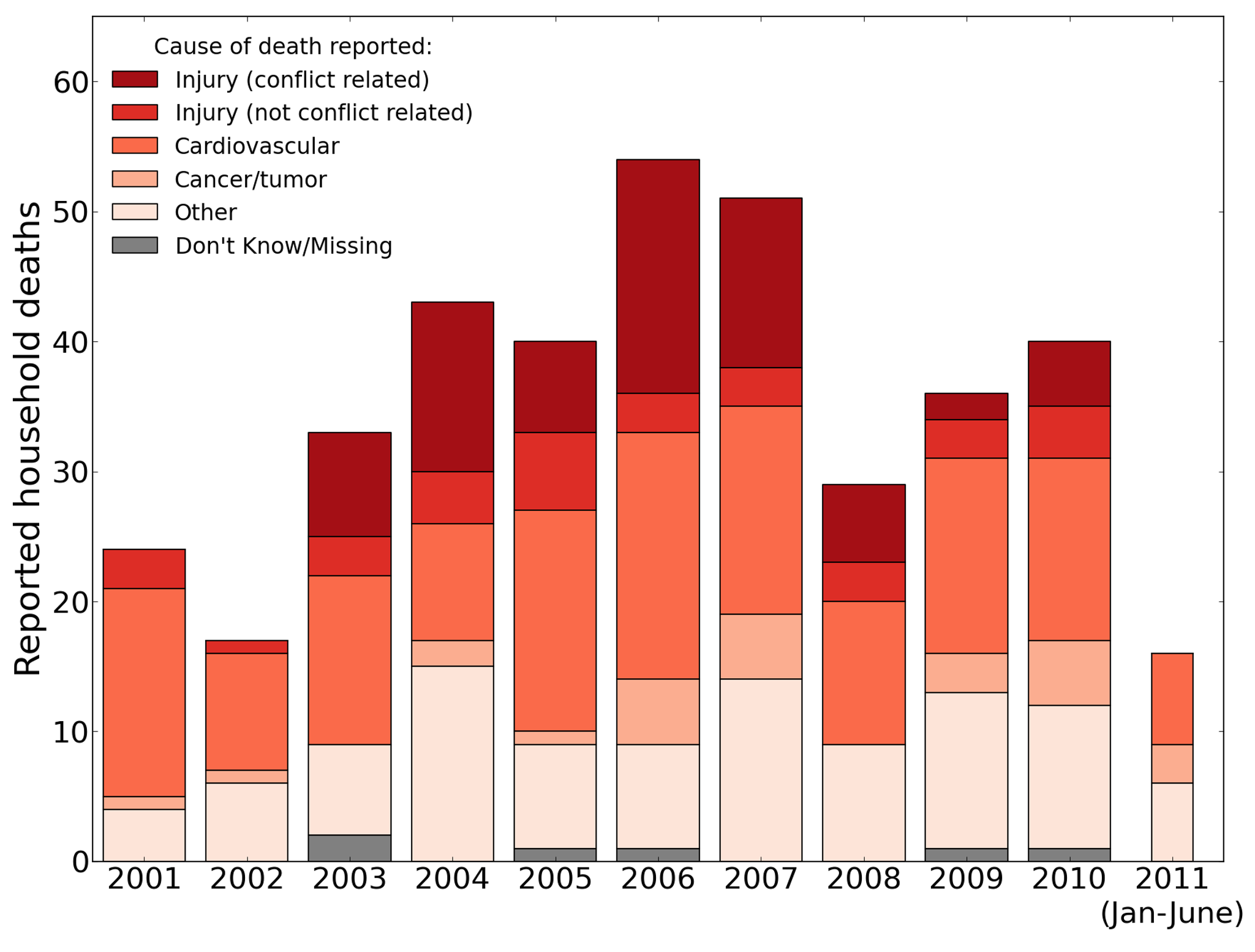The Myth of the Surge Endures
 Photo courtesy the Chairman of the Joint Chiefs of Staff. Used in accordance with Creative Commons guidelines.
Photo courtesy the Chairman of the Joint Chiefs of Staff. Used in accordance with Creative Commons guidelines.
Former CIA Director General David Petraeus shared his thoughts on the current state of affairs in his old bailiwick of Iraq via Foreign Policy on Wednesday.
This is not a road that Iraqis had to travel. Indeed, by the end of the surge in 2008, a different future was possible. That still seemed to be the case in December 2011, when the final U.S. forces (other than a sizable security assistance element) departed; however, the different future was possible only if Iraqi political leaders capitalized on the opportunities that were present.
Petraeus claims “a different future for Iraq was possible,” but the bulk of his opinion piece centers around his belief in the success of the Surge. Addressing the quality of that argument is a necessary step toward evaluating the feasibility of Petraeus’ claim suggesting the possibility of post-Surge Iraq markedly different than the Iraq of reality.
Although I halted the transition of tasks from coalition to Iraqi forces shortly after I took command, we knew that ultimately such transitions would be essential to our ability to draw down our forces and send them home. As President Bush used to observe, “U.S. forces will stand down as the Iraqi forces stand up.” We knew that ultimately the U.S. military could not support the replacement of the five surge brigades and the other additional forces deployed to Iraq in 2007. It thus was imperative that Iraqi forces be ready by the latter part of 2007 to assume broader duties so that coalition forces could begin to draw down and the surge forces could go home.
Translation: The Surge was unsustainable. The US military was not able, or its civilian leaders were unwilling, to replace the forces sent to Iraq as a temporary wedge against the unfolding civil war. Narrowly defined, the Surge had limited success. Once it reached its denouement, however, the violence in Iraq picked up essentially where it had left off, except for one important thing: the violence became more likely to kill Iraqi women (and, presumably, children) than Iraqi men. The study of Iraqi fatalities in the Iraq War published by PLOS Medicine earlier this month backs this up.
 Amy Hagopian et al., “Mortality in Iraq Associated with the 2003–2011 War and Occupation: Findings from a National Cluster Sample Survey by the University Collaborative Iraq Mortality Study,” PLOS Medicine.
Amy Hagopian et al., “Mortality in Iraq Associated with the 2003–2011 War and Occupation: Findings from a National Cluster Sample Survey by the University Collaborative Iraq Mortality Study,” PLOS Medicine.
Petraeus continues:
Counterinsurgency operations depend on a keen understanding of the political, historical, cultural, economic, and military situation in each area, and our initiatives built on those begun earlier in the war to further our understanding of the dynamics of each province, district, and community. Truly understanding the human terrain was vital to our ability to improve its security. The heart of the struggle in Iraq was a competition for power and resources between the major factions in the country — the majority Shiite Arabs and the minority Sunni Arabs and Kurds. (There were subfactions of each group as well, of course, in addition to other minority sects and ethnicities such as Turkoman, Yezidis, and Iraqi Christians, among others.) Achieving enduring progress in Iraq thus required achievement of political agreements on a host of key issues that divided the various factions. Consequently, seeking to foster agreement on such issues was yet another important component of the overall approach, and it developed into one to which Ambassador Crocker and I devoted considerable focus and effort. During the course of the surge, there were important laws passed and initiatives agreed upon — for example, a provincial powers act, an elections law, a reform of the de-Ba’athification decree, an amnesty law, and so forth; however, it was in this area that the most additional progress was (and still is) needed. Nonetheless, the surge made politics once again the operative mechanism through which Iraqis would divide power and resources — even as they struggled to create the political impetus and find the common ground to seize the moment and the opportunity offered to them.
One might imagine that a committed counter-insurgency operator like Petraeus would appreciate that the ethnic and sectarian hatreds of well over a millennium would could not be halted, much less reversed, by the commitment of about 30,000 American troops, for a limited period of time, in a country with a fledgling democratic government but no modern history of democracy.
It is near the end of the fourth page that Petraeus serves up his whopper:
The decline in violence overall, and the substantial reduction in car bombings in particular, as well as gradual improvements in a number of other areas of our effort made possible by the improved security, enabled Ambassador Crocker and me to report guarded progress in congressional hearings in September 2007. While highly charged emotionally at the time, those hearings gained us critical additional time and support, without which it is likely that the mission in Iraq would have failed. And, after we were able to report further progress when we testified again in April 2008, having already commenced the drawdown of the surge as well, we were able to gain still further time and support for our efforts in Iraq.
The progress continued throughout the remainder of the surge and beyond, with periodic upticks in violence, to be sure, but with the overall trajectory positive, despite continued inability to resolve many of the major political issues that divided the Iraqi people. Nonetheless, the comprehensive civil-military endeavor pursued during the surge made it possible over time to transfer tasks from U.S. and other coalition forces to Iraqi soldiers and police and, ultimately, for the United States to withdraw its final combat elements at the end of 2011 without a precipitate descent back into the violence and civil conflict that made the surge necessary in the first place.
The team, previously mentioned, that researched Iraqi fatalities in the war published this graph illustrating part of its findings:
 Amy Hagopian et al., “Mortality in Iraq Associated with the 2003–2011 War and Occupation: Findings from a National Cluster Sample Survey by the University Collaborative Iraq Mortality Study,” PLOS Medicine.
Amy Hagopian et al., “Mortality in Iraq Associated with the 2003–2011 War and Occupation: Findings from a National Cluster Sample Survey by the University Collaborative Iraq Mortality Study,” PLOS Medicine.
The Surge began in January 2007 and continued through July 2008. As the graph illustrates, combat-related deaths were high in 2007 and lower, though still significant, in 2008. Following the fewest combat-related deaths of the war in 2009, the toll of violence began to grow once more in 2010. What has happened since is difficult to say, but any perusal of news items coming from Iraq will paint a rather bleak picture. What short term success the Surge might have won has been lost. The Washington Post’s foreign affairs blogger Max Fisher assessed the data:
This study confirms two components of the Iraq War narrative: that fighting dropped sharply after 2007 and that 2008 was a relatively successful year in reducing combat deaths. You can see that the dark-red bars get smaller, meaning there are fewer deaths from direct violence. But this chart still contradicts our overall understanding: It turns out that deaths picked back up in 2009 and then even further in 2010, to 2005 levels. The gain was temporary and in the process of reversing by the time we left.
Whatever positive anecdotal evidence David Petraeus might care to highlight from his time as commanding general of the Multi-National Force — Iraq, the data collected by a team of American and Canadian researchers cooperating with the Iraqi Ministry of Health reveals that the Surge achieved little in lasting terms. Petraeus himself admits the situation has worsened:
In many respects, Iraq today looks tragically similar to the Iraq of 2006, complete with increasing numbers of horrific, indiscriminate attacks by Iraq’s al Qaeda affiliate and its network of extremists. Add to that the ongoing sectarian civil war in Syria — which is, in many aspects, a regional conflict being fought there — and the situation in Iraq looks even more complicated than it was in 2006 and thus even more worrisome — especially given the absence American combat forces.
The general’s recommendations to Iraq’s leaders?:
As Iraqi leaders consider the way forward, they would do well to remember what had to be done the last time the levels of violence escalated so terribly. If Iraqi leaders think back to that time, they will recall that the surge was not just more forces, though the additional forces were very important. What mattered most was the surge of ideas — concepts that embraced security of the people by “living with them,” initiatives to promote reconciliation with elements of the population that felt they had no incentive to support the new Iraq, ramping up of precise operations that targeted the key “irreconcilables,” the embrace of an enhanced comprehensive civil-military approach, increased attention to various aspects of the rule of law, improvements to infrastructure and basic services, and support for various political actions that helped bridge ethno-sectarian divides.
The ideas that enabled progress during the surge are, in many respects, the very ideas that could help Iraq’s leaders reverse the tragic downward spiral that we have seen in recent months. As we discovered in the run-up to the surge of 2007, a singular focus on counterterrorist operations will most likely fail to stem the violence gripping Iraq. If Iraq and the Iraqis are to have yet one more opportunity to move forward, they would likely find it useful to revisit the entire array of approaches pursued in 2007 and 2008. It is heartening, thus, to know that some of the veterans of the surge, American as well as Iraqi, are engaged in the effort to help Iraq determine and then pursue the initiatives needed to address the terrible increase in violence in that country. This is a time for them to work together to help Iraqi leaders take the initiative, especially in terms of reaching across the sectarian and ethnic divides that have widened in such a worrisome manner. It is not too late for such action, but time is running short.
Read against this latest fatality data, Petraeus’ prescription appears unreasonably sanguine. As the raft of initial histories of the Surge appears on the horizon, readers will do well to consider the best available data alongside the assertions of the officers and civilian leaders — many of them named and feted by Petraeus in this opinion piece — who orchestrated the Surge and have the most at stake in how it is regarded historically.
One final item which shouldn’t go unnoticed: Petraeus’ missive coincidentally appeared the same day his former executive officer’s book on the Surge became available from Yale University Press.